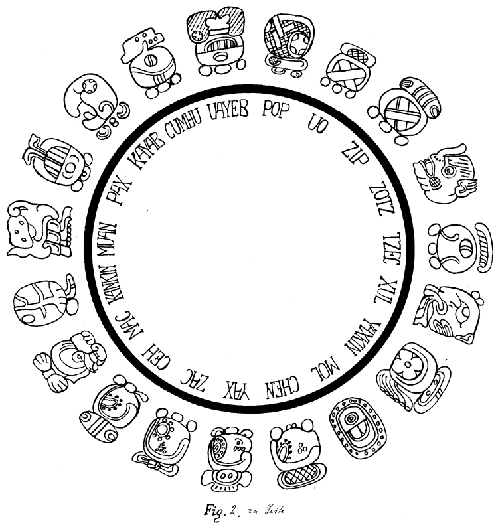WHI-Chap6/21-Obj2
What were the religious beliefs and cultural achievements of the Maya; why did that society collapse?
Religion
The Mayas had distinct religious beliefs. These included the Popul Vuh, the creation myth of the Mayas. This myth said that the Mayas came from corn and that the gods bled themselves to create humans. The Mayas made the blood letting a religious tradition for ceremonies, as well as sacrificial killings. Prisoners of war were mostly used in ceremonies for blood-letting and sacrifices, although priests were known to do this too. Also, some people who lost the sacred ball game would be sacrificed. Priests taught that shedding blood to the gods would continue the agricultural cycle. They believed that the world was made and existed daily by the gods. Mayan religious thought was based on agriculture overall.

Achievements
The Mayas improved the calendar that the Olmecs had created. "The Maya calendar interwove two kinds of year: a solar year of 365 days governed the agricultural cycle, and a ritual year of 260 days governed daily affairs by organizing time into twenty "months" of thirteen days apiece" (Bentley). The Mayas also made the concept of zero as well as making a very advanced system of writing. This writing was composed of Chinese-like characters and separate symbols for syllables. Mayan scribes recorded astronomy, religion, and other matters on deer skin or smashed tree bark.

Destruction
In 800 CE, Mayas desert all of the cities for reasons not known, but there are some ideas. The two most likely were that a civil war broke out amongst themselves or that their advanced agricultural system collapsed. Some other reasons were that invaders sacked the cities and scared everyone away, people lost faith in their leaders, an epidemic struck, or that a natural catastrophe occured.
Bibliography
Bentley, Jerry H., and Herbert F. Ziegler. "Early Societies in the Americas and Oceania." Traditions and Encounters. 4th ed. Vol. 1. 2000. Boston: Mc Graw Hill, 2008. 141-142. Print.